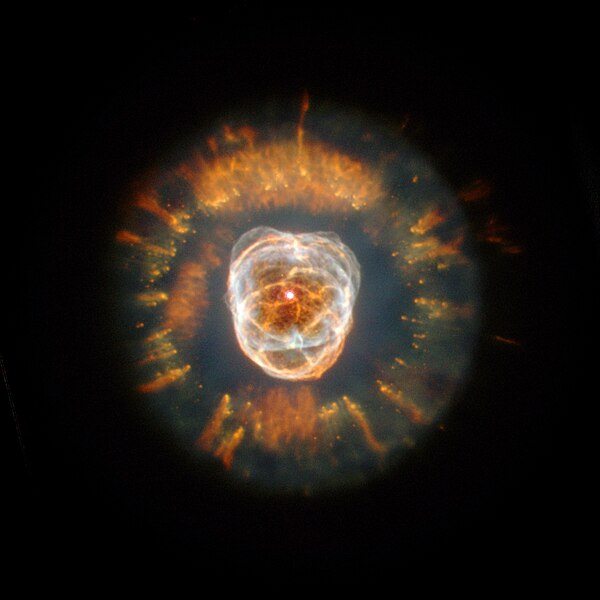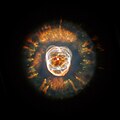File:Ngc2392.jpg

Dimensioni di questa anteprima: 600 × 600 pixel. Altre risoluzioni: 240 × 240 pixel | 480 × 480 pixel | 768 × 768 pixel | 1 024 × 1 024 pixel | 1 500 × 1 500 pixel.
File originale (1 500 × 1 500 pixel, dimensione del file: 1,16 MB, tipo MIME: image/jpeg)
Cronologia del file
Fare clic su un gruppo data/ora per vedere il file come si presentava nel momento indicato.
| Data/Ora | Miniatura | Dimensioni | Utente | Commento | |
|---|---|---|---|---|---|
| attuale | 14:34, 28 lug 2005 |  | 1 500 × 1 500 (1,16 MB) | Startaq | |
| 19:20, 1 feb 2005 |  | 320 × 259 (12 KB) | CWitte | Eskimo nebula |
Utilizzo del file
La seguente pagina usa questo file:
Utilizzo globale del file
Anche i seguenti wiki usano questo file:
- Usato nelle seguenti pagine di af.wikipedia.org:
- Usato nelle seguenti pagine di ar.wikipedia.org:
- Usato nelle seguenti pagine di arz.wikipedia.org:
- Usato nelle seguenti pagine di ast.wikipedia.org:
- Usato nelle seguenti pagine di az.wikipedia.org:
- Usato nelle seguenti pagine di be.wikipedia.org:
- Usato nelle seguenti pagine di bg.wikipedia.org:
- Usato nelle seguenti pagine di bn.wikipedia.org:
- Usato nelle seguenti pagine di bs.wikipedia.org:
- Usato nelle seguenti pagine di ca.wikipedia.org:
- Usato nelle seguenti pagine di ce.wikipedia.org:
- Usato nelle seguenti pagine di cs.wikipedia.org:
- Usato nelle seguenti pagine di cv.wikipedia.org:
- Usato nelle seguenti pagine di da.wikipedia.org:
- Usato nelle seguenti pagine di de.wikipedia.org:
- Usato nelle seguenti pagine di diq.wikipedia.org:
- Usato nelle seguenti pagine di el.wikipedia.org:
- Usato nelle seguenti pagine di en.wikipedia.org:
- Planetary nebula
- Compact object
- Eskimo Nebula
- List of planetary nebulae
- User:Anticipation of a New Lover's Arrival, The/Galleries/Awards
- Caldwell catalogue
- Herschel 400 Catalogue
- User:Reginhild
- Wikipedia:Featured picture candidates/May-2007
- Wikipedia:Featured picture candidates/Eskimo Nebula
- User:Reginhild/Userboxes/Space Scientist
- Gemini (constellation)
Visualizza l'utilizzo globale di questo file.
